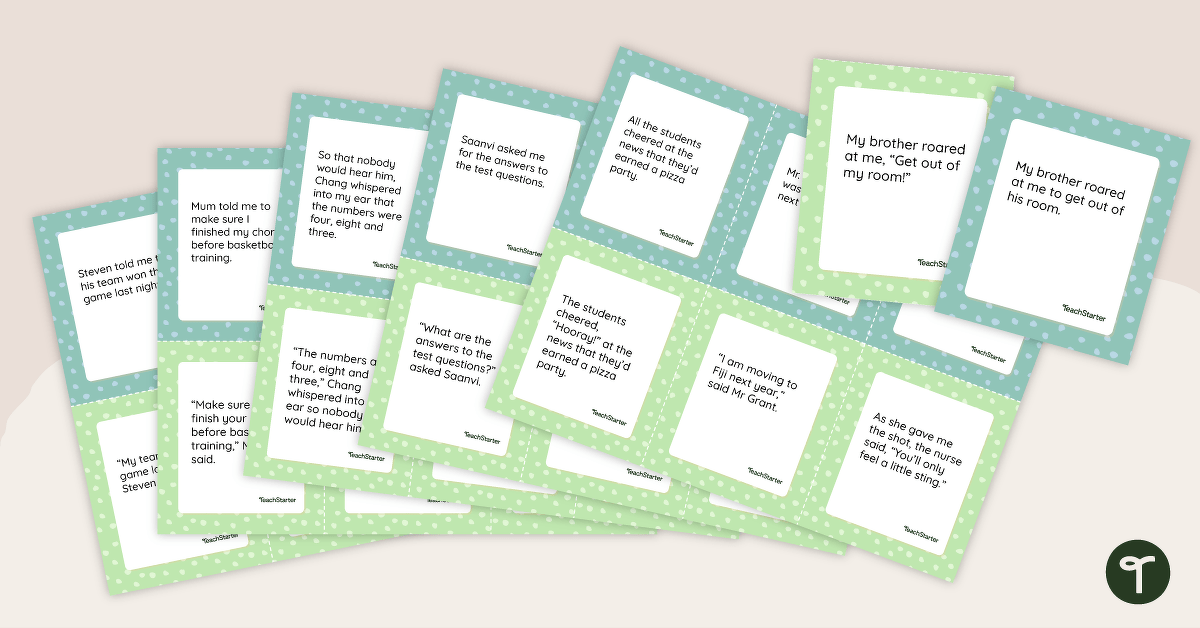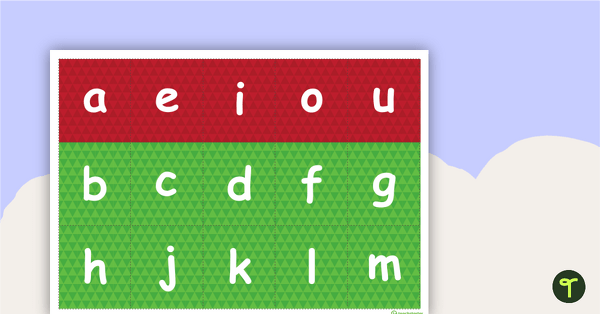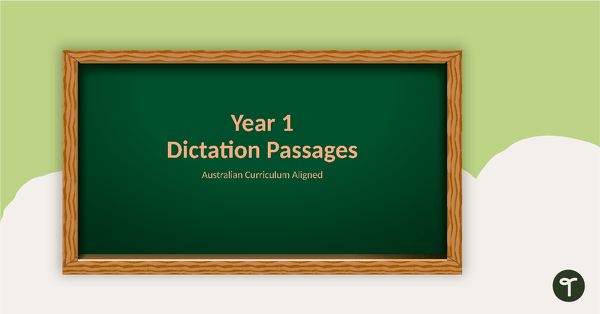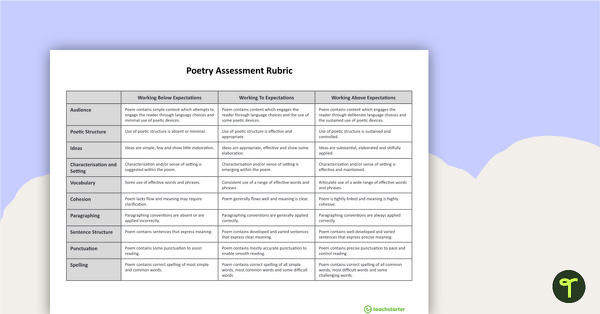Investigate the differences between direct and indirect speech with this match-up activity.
Consolidate Understanding of Direct and Indirect Speech
This simple match-up activity provides students with opportunities to identify direct and indirect speech.
Before students can comfortably convert indirect (reported) speech to direct (quoted) speech and vice versa, they need exposure to lots of examples. This resource provides the scaffolding you’re looking for! Students are presented with examples where the exact words are spoken within quotation marks as well as examples where what has been said is summed up or reported.
The value of this match-up activity is that it gives students practice in being able to differentiate between these two types of speech before attempting to incorporate them into their writing. Learning how to add dialogue to narratives (or other text types) with correct punctuation is quite a complicated undertaking!
How to Use the Match-Up
There are 15 green cards, each displaying a sentence that contains direct speech. For every direct speech card, there is a matching indirect speech version (blue cards.)
After shuffling the cards, spread them out face up in the middle of the playing area. Player 1 selects a card and reads it aloud. They then search for the matching card of the opposite colour. Once they’ve found it, they read the card aloud and place the pair together at their side. Player 2 then has their turn and play continues in this way.
Tips for Differentiation + Scaffolding
A team of dedicated, experienced educators created this resource for students to work on as an English Group Activity.
Matching Direct and Indirect Speech could be completed individually or in small groups.
If you have a mixture of above and below-level learners, check out these suggestions for keeping students on track with the concepts:
🆘 Support Struggling Students
Assist students who need help understanding the concepts by providing access to previous assignments, posters and anchor charts for them to recall past lessons.
The activity itself could be simplified by reducing the number of cards and modifying the activity to become an identification exercise rather than a match-up. Why not make a game out of it? Students play with a partner and use a random selection of the cards face down in a pile. One player will collect direct speech cards, and the other will collect indirect speech cards. Players take turns drawing a card from the pile and deciding which type of speech it is. The card is collected by the appropriate player.
➕ A Greater Challenge
Add another layer of complexity by doing this activity aurally. Use the cards as an aural identification exercise rather than a match-up. Students play with a partner and place all the cards face down in a pile. Students take turns drawing from the pile and reading a card for their partner, who must decide whether it is an example of direct/indirect speech simply by listening. If named correctly they get to keep the card, if incorrect, the card goes to their opponent.
👋 Exit Ticket
Instead of using these cards as a match-up activity, utilise them for formative assessment after learning about direct/indirect speech. Hand a card to each student. They identify which type of speech is on their card before moving on to a new activity.
Easily Prepare This Resource for Your Students
Use the dropdown icon on the Download button to choose between the PDF or Google Slides version of this resource.
Print on thick card for added durability and longevity. Place all pieces in a folder or large envelope for easy access.
This resource was created by Jennifer Hall, a Teach Starter Collaborator.
Don’t stop there! We’ve got more activities and resources that cut down on lesson planning time:








0 Comments
Write a review to help other teachers and parents like yourself. If you'd like to request a change to this resource, or report an error, select the corresponding tab above.